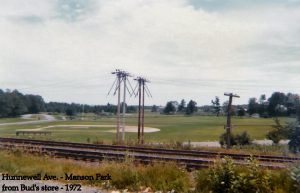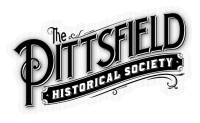![]()
Pittsfield Historical Society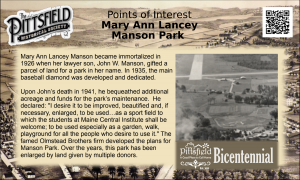
Manson Park
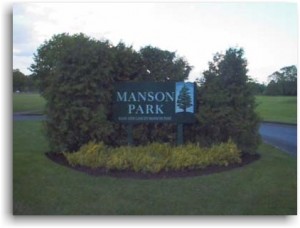 Mary Ann Lancey Manson Park is a jewel of an in-town park, located adjacent to Pittsfield’s central business district. The park contains land on both sides of the Sebasticook River just south of the industrialized zone. Most of the park was donated to the Town by John W. Manson, a prestigious Pittsfield lawyer and businessman, and named for his mother, a member of the prominent family who ran the distinguished Lancey House Hotel.
Mary Ann Lancey Manson Park is a jewel of an in-town park, located adjacent to Pittsfield’s central business district. The park contains land on both sides of the Sebasticook River just south of the industrialized zone. Most of the park was donated to the Town by John W. Manson, a prestigious Pittsfield lawyer and businessman, and named for his mother, a member of the prominent family who ran the distinguished Lancey House Hotel.
The park was donated in two sections, the first and largest portion in 1926 during Mr. Manson’s lifetime, including the access way extending from the end of Crosby Street,and the second upon his death in 1941 as a bequest in his will. The will also provided for a trust to fund the maintenance of the park, which Mr. Manson suggested be supervised by a 5-member committee of the Town. The Parks and Recreation Committee was established to carry out that purpose by directing the use of the maintenance monies. Acquisition of adjoining land to be added to the park is among the allowed uses of these funds.
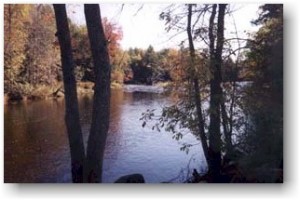 The wishes of the donor as stated in his will were: “I desire it to be improved, beautified and, if necessary, enlarged, to be used somewhat, not principally, as a sport field to which the students of Maine Central Institute shall be welcome; to be used especially as a garden, walk, and playground for all the people who desire to use it…I believe the town should improve the river flowing along said park by carrying the sewage below where it now enters to swifter water, and should clear the river of rocks and obstacles to make a good current.”
The wishes of the donor as stated in his will were: “I desire it to be improved, beautified and, if necessary, enlarged, to be used somewhat, not principally, as a sport field to which the students of Maine Central Institute shall be welcome; to be used especially as a garden, walk, and playground for all the people who desire to use it…I believe the town should improve the river flowing along said park by carrying the sewage below where it now enters to swifter water, and should clear the river of rocks and obstacles to make a good current.”
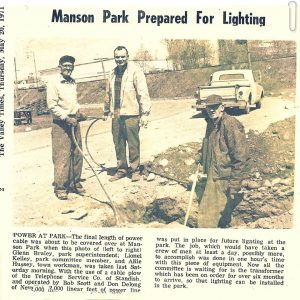 The construction of the park commenced in 1946 and it was opened officially in 1948-49. The local newspaper reported that 282 young people participated in the first organized program held at the facility; since that time, the park has continued to provide a positive focal point for family activities in Pittsfield. An additional four-acre section was donated to the park in 1973 by Mr. and Mrs. Ronello Brown, the same year a memorial was dedicated to J.W. Manson. In 1983, the Town received a 17-acre addition to the park via a gift of Lancey G. Milliken. This land is on the east side of the Sebasticook River, extending to the Central Maine Railroad line (it contains an easement reserved for the Central Maine Power transmission line). The land is primarily wetland, and has not as yet been put to purposeful use. Townspeople are certainly grateful for the generous donations of these community-spirited individuals.
The construction of the park commenced in 1946 and it was opened officially in 1948-49. The local newspaper reported that 282 young people participated in the first organized program held at the facility; since that time, the park has continued to provide a positive focal point for family activities in Pittsfield. An additional four-acre section was donated to the park in 1973 by Mr. and Mrs. Ronello Brown, the same year a memorial was dedicated to J.W. Manson. In 1983, the Town received a 17-acre addition to the park via a gift of Lancey G. Milliken. This land is on the east side of the Sebasticook River, extending to the Central Maine Railroad line (it contains an easement reserved for the Central Maine Power transmission line). The land is primarily wetland, and has not as yet been put to purposeful use. Townspeople are certainly grateful for the generous donations of these community-spirited individuals.
Many improvements have been made to the park since it was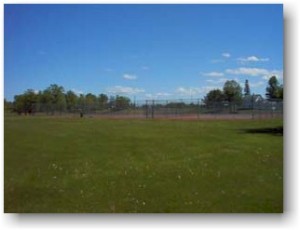 first opened, paid for by a combination of trust funds and private donations. The park area now consists of approximately 45 acres, 18 of which are undeveloped and located between the Sebasticook River and Detroit Ave. The area more commonly recognized as Manson Park lies on the southwest edge of the river. It is mostly open, with Tennis Courts some tall, attractive trees on the southern end along Peltoma Ave. This area serves as headquarters for the Central Maine Egg Festival and Kiwanis Karnival, held as an annual joint event during the fourth week of July. In order to serve the festival and carnival, the carnival area was improved with power and water connections paid for equally by the Kiwanis Club and the Egg Festival Committee. In the balance of the warm weather months, this carnival area is used as a soccer practice area for the MCI and Warsaw School teams. The K-7 Soccer program uses this area as well. It is also occasionally rented for large company picnics.
first opened, paid for by a combination of trust funds and private donations. The park area now consists of approximately 45 acres, 18 of which are undeveloped and located between the Sebasticook River and Detroit Ave. The area more commonly recognized as Manson Park lies on the southwest edge of the river. It is mostly open, with Tennis Courts some tall, attractive trees on the southern end along Peltoma Ave. This area serves as headquarters for the Central Maine Egg Festival and Kiwanis Karnival, held as an annual joint event during the fourth week of July. In order to serve the festival and carnival, the carnival area was improved with power and water connections paid for equally by the Kiwanis Club and the Egg Festival Committee. In the balance of the warm weather months, this carnival area is used as a soccer practice area for the MCI and Warsaw School teams. The K-7 Soccer program uses this area as well. It is also occasionally rented for large company picnics.
Manson Park now boasts three softball diamonds with bleachers, three tennis courts, a basketball court, horseshoe pit, a picnic area with fireplaces and tables, playground, good access roads, parking facilities, and benches. The park is largely maintained as a well-groomed lawn. The park is unquestionably both attractive and functional, offering a wide variety of active and passive recreational activities in pleasant surroundings. One special garden is maintained: During the 1980’s, a group of grateful citizens planted a perennial garden accompanied by a granite bench within the turnaround in the middle of the park to honor Kerry Martin, an avid teacher and community volunteer.
The Manson Park School playground 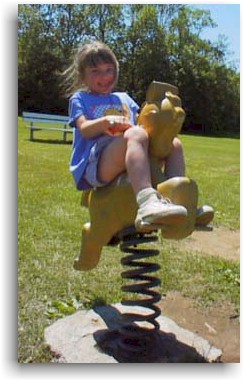 was renovated in 1993-94 by a volunteer committee supported by local businesses. The new playground surface is a sand base covered with wood chips. Swing structures and a merry-go-round from the previous playground were reset in the ground. The playground added new swings, 2 slides, a clock, tunnel, tic-tac-toe, bench, moon walker, physical education structure, and basketball backboard placed for Pre-kindergarten to 2nd graders to reach. Funds above and beyond the construction costs were donated to the school to establish a continuing playground maintenance fund.
was renovated in 1993-94 by a volunteer committee supported by local businesses. The new playground surface is a sand base covered with wood chips. Swing structures and a merry-go-round from the previous playground were reset in the ground. The playground added new swings, 2 slides, a clock, tunnel, tic-tac-toe, bench, moon walker, physical education structure, and basketball backboard placed for Pre-kindergarten to 2nd graders to reach. Funds above and beyond the construction costs were donated to the school to establish a continuing playground maintenance fund.
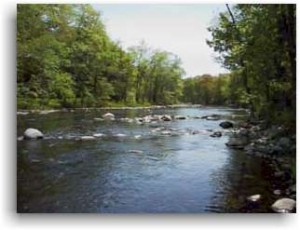 The most used section of Manson Park is the swimming pool complex adjacent to Lancey Street, although the pool is not technically considered part of the park. The least-used section is the undeveloped portion of the park on the northeast side of the river, accessible via a snowmobile bridge from the southwestern section of the park. There is interest in exploring the construction of a nature interpretation area there. As the site is largely a forested needle-leaved evergreen wetland, this would have to be carefully planned and executed by knowledgeable people and require environmental permits. A related interest involves increasing use of the public access to the Sebasticook River from Manson Park for initiating canoe trips to the Burnham Dam.
The most used section of Manson Park is the swimming pool complex adjacent to Lancey Street, although the pool is not technically considered part of the park. The least-used section is the undeveloped portion of the park on the northeast side of the river, accessible via a snowmobile bridge from the southwestern section of the park. There is interest in exploring the construction of a nature interpretation area there. As the site is largely a forested needle-leaved evergreen wetland, this would have to be carefully planned and executed by knowledgeable people and require environmental permits. A related interest involves increasing use of the public access to the Sebasticook River from Manson Park for initiating canoe trips to the Burnham Dam.
Original Version: 29-Dec-05.


